Using the skills and knowledge that you have acquired in Unit 2 of this module, identify the chapter, block and code for all the causes of death listed on the death certificate. An ICD code should be inserted for all causes of death (immediate, intermediate and underlying causes) on a death certificate.
The following examples will help in understanding the concept better.
Example 1:
Patient #1 is admitted with sputum-positive, microscopically confirmed, pulmonary tuberculosis and dies in the ward.
The death certificate for this patient would be as follows:
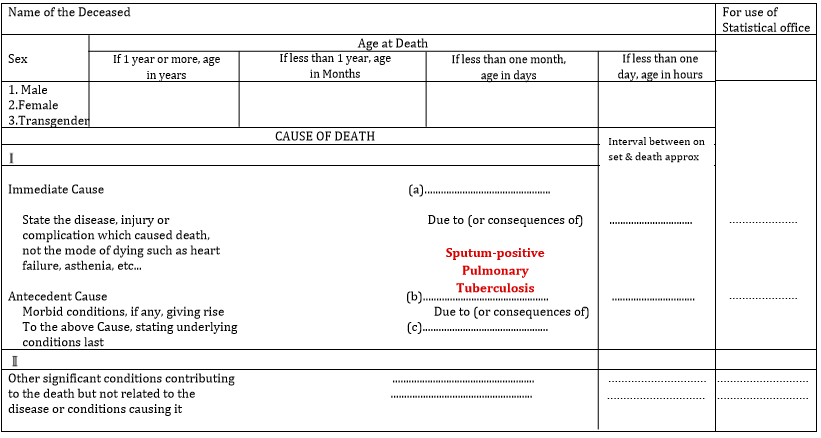
| Step 1 | The cause of death in a given death certificate is Sputum-positive Pulmonary Tuberculosis |
|---|---|
| Step 2 | The chapter under which the cause of death falls into is Chapter I: Certain infectious and parasitic diseases |
| Step 3 | In this chapter, look at block," Tuberculosis " |
| Step 4 | Under this block, you will find Sputum-positive Pulmonary tuberculosis with the code A15 |
| Step 5 | The ICD code should be filled in the death certificate against the cause of death |
The death certificate for this patient after ICD coding would be as follows:
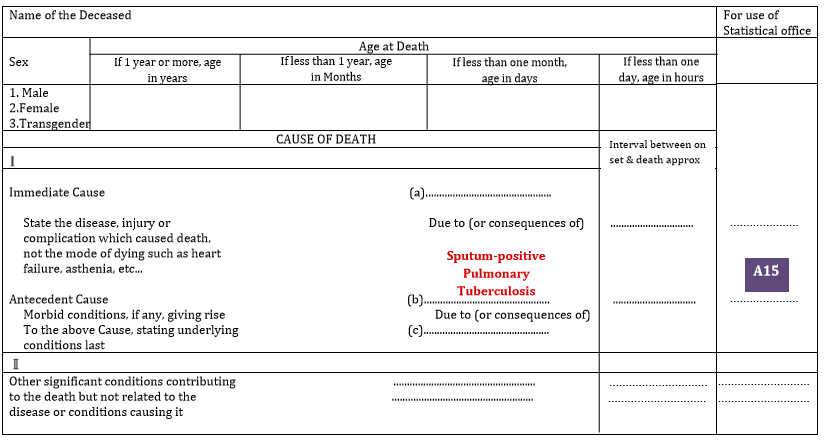
Example 2:
Patient #2 is admitted with acute gastroenteritis and dehydration and then dies in the ward.
The death certificate for this patient would be as follows:
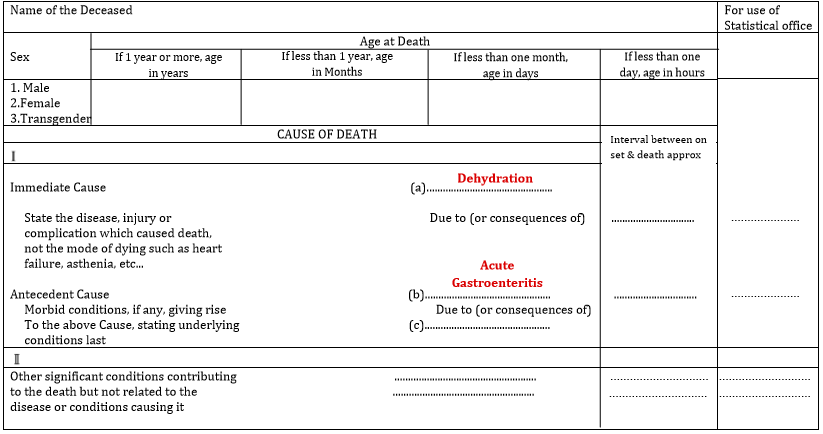
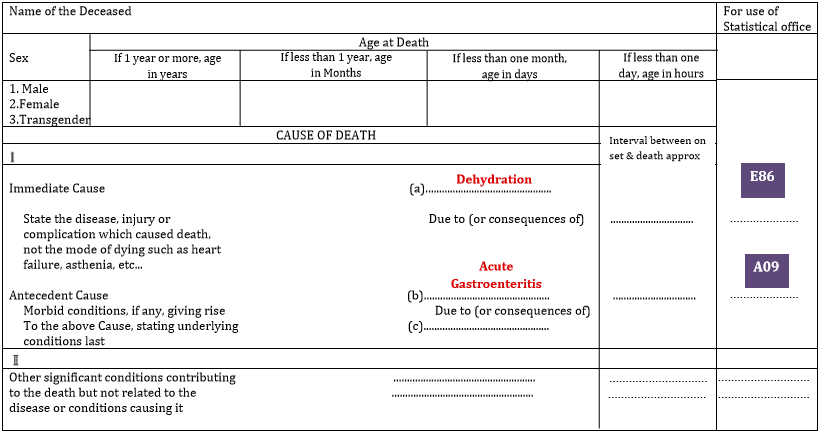
The same death certificate after ICD coding would be as follows:
Example 3:
Patient #3 is brought with myocardial infarction and then develops arrythmia and heart failure and then dies in the Coronary Care Unit (CCU).
The death certificate for this patient would be as follows:

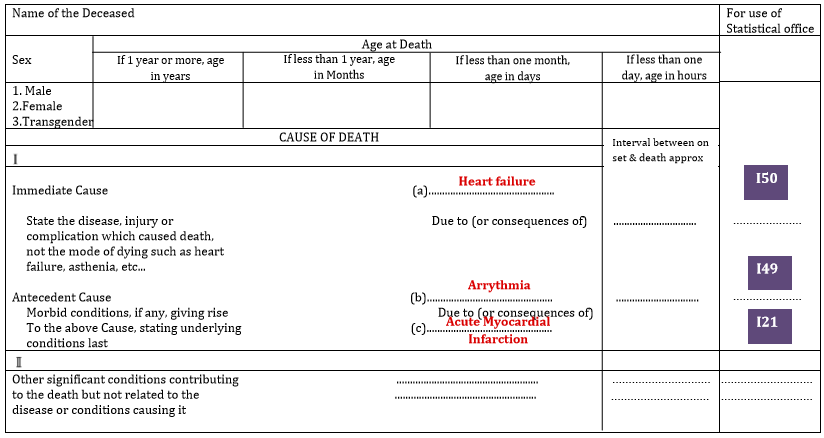
The same death certificate after ICD coding would be as follows:
Example 4:
Patient #4 aged 25 years was admitted to a hospital after being hit by a bus on the road. She underwent surgery for severe head injury. She developed acute pulmonary embolism and died a week later.
The death certificate for this patient would be as follows:
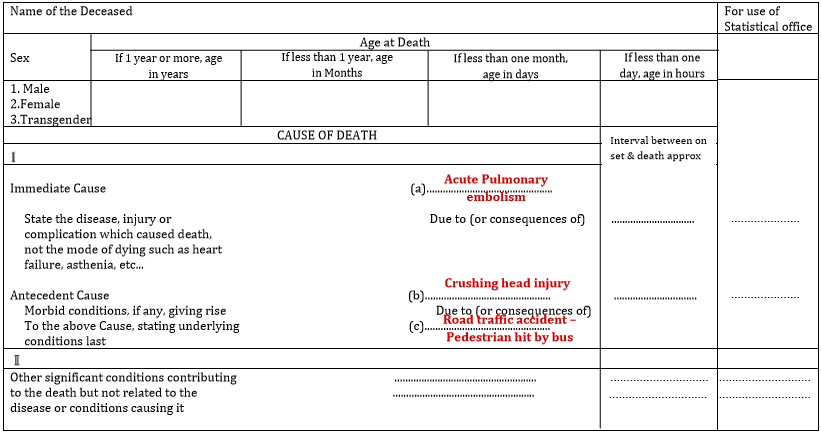

The same death certificate after ICD coding would be as follows:
Example 5:
Patient #5 aged 30 years was diagnosed with Plasmodium falciparum malaria. She was admitted to hospital. Later she developed acute respiratory distress syndrome and ultimately died of acute renal failure.
The death certificate for this patient would be as follows:
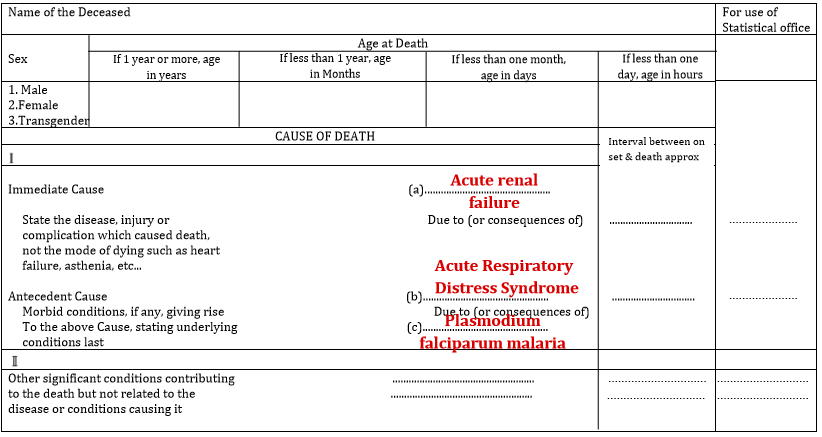
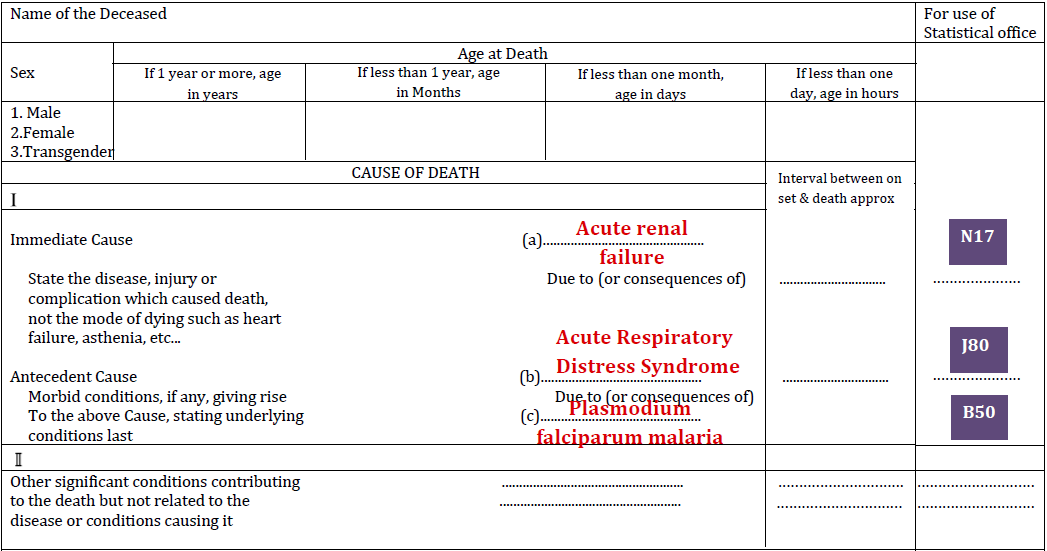
The same death certificate after ICD coding would be as follows:
Example 6:
Patient #6 aged 60 years was being treated for pneumonia in a hospital. He is a chronic smoker for past 25 years. This acute lung infection occurred on his underlying emphysema. His lung infection worsened and he finally expired.
The death certificate for this patient would be as follows:

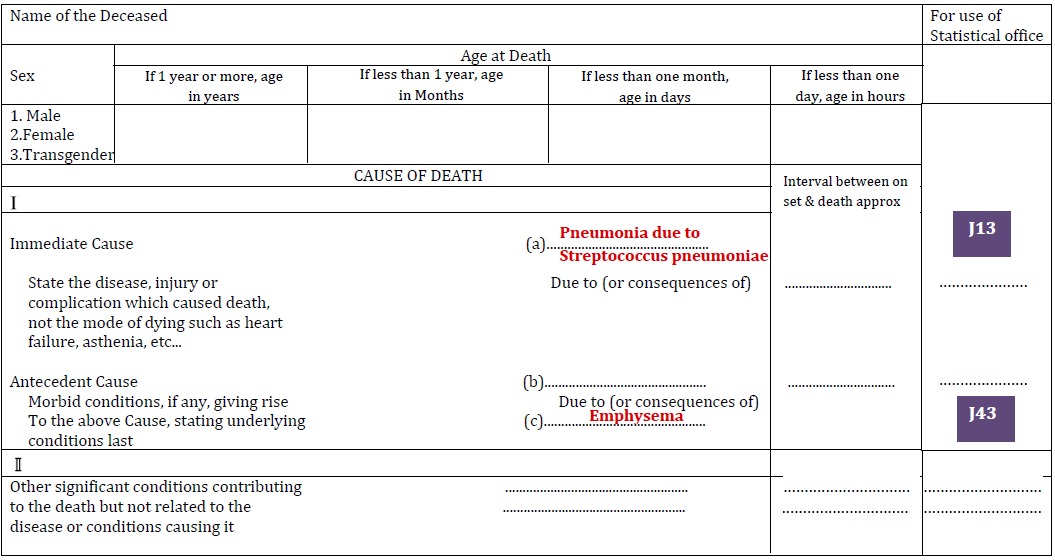
The same death certificate after ICD coding would be as follows:
Example 7: Case scenario with time intervals
Patient #7 suffering from Respiratory tuberculosis, (bacteriologically and histologically confirmed) from past 6 months is brought to emergency. He is diagnosed with bacterial meningitis which lasts for 5 days. His condition worsens and he dies due to hydrocephalus 24 hours later.
The death certificate for this patient would be as follows:

The same death certificate after ICD coding would be as follows:
